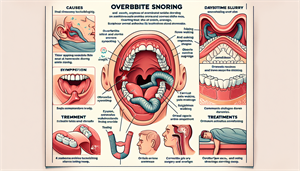
Exercises for Sleep Apnea
Imagine being able to manage your sleep apnea, a condition that affects millions of people around the world, with just a few simple exercises for sleep apnea. Intriguing, right?
Sleep apnea doesn’t just rob you of your sleep, but also your energy, productivity, and overall well-being. But there’s a silver lining: by incorporating these simple exercises for sleep apnea into your daily routine, you can significantly alleviate sleep apnea symptoms and reclaim your life!
Key Takeaways
-
Regularly practicing throat exercises, vocal vowel workouts, and specific techniques like the Yawn and Hold can strengthen muscles around the airway, potentially reducing snoring and symptoms of mild to moderate obstructive sleep apnea.
-
Tongue toning exercises including the Entire Tongue Lift, Progressive Tongue Stretch, and Dynamic Tongue Pushes help in toning the tongue and surrounding muscles, possibly alleviating airway obstructions and improving sleep apnea-related breathing issues.
-
Integrating diverse exercises such as diaphragmatic breathing, myofunctional therapy, and cardiovascular activities along with positional adjustments and CPAP therapy, if applicable, can provide comprehensive management of sleep apnea.
Unlocking the Power of Throat Strengthening
We begin our quest for improved sleep by harnessing the power of throat exercises. Strengthening the muscles around the airway can lead to reduced snoring and improved airway stability, effectively managing mild to moderate obstructive sleep apnea. Imagine having the power to counteract airway blockage during sleep! Sounds amazing, doesn’t it? We’ll delve into this topic to understand the benefits of throat strengthening.
Vocal Vowel Workouts
Vocal vowel workouts are a key tool in your arsenal against sleep apnea. Regular practice of vocal vowel sounds can fortify your throat muscles, resulting in reduced snoring and potential relief from sleep apnea symptoms. Repetition of vowel sounds allows for specific targeting and strengthening of throat muscles, crucial for maintaining an open airway during sleep. So, are you ready to turn vowels into your secret weapon against sleep apnea?
The Yawn and Hold Technique
Next in line is the amazing Yawn and Hold technique. It’s all about strengthening mouth and throat muscles to reduce sleep apnea symptoms. In this technique, you’ll tilt your head back, open your mouth wide, and take deep breaths through your mouth.
It sounds simple, but this exercise has the power to strengthen your throat and mouth muscles, prevent tissue collapse in the airway, and enhance overall sleep quality, all of which contribute to reducing sleep apnea symptoms. Get ready to elevate your breathing technique with the Yawn and Hold Technique.
Soft Palate Elevations
Now, let’s turn the spotlight to soft palate elevations. By engaging the muscles in the mouth and throat, strengthening the soft palate through training can lead to improved symptoms of obstructive sleep apnea and a reduction in snoring. This is achieved by performing simple stretches and ‘soft palate pushups’ using specific sounds. With these exercises, you can enjoy the benefits of a stronger soft palate, which plays a crucial role in causing airway obstruction during sleep.
Tongue Toning Tactics for Sleep Apnea
Advancing to tongue toning tactics, further fortification against sleep apnea is possible. Tongue exercises are the key to toning and strengthening the muscles in the tongue and surrounding areas, which in turn reduces airway obstructions during sleep, helping you breathe easier and sleep better. From the Entire Tongue Lift to the Progressive Tongue Stretch and Dynamic Tongue Pushes, let’s explore how these techniques can help in managing sleep apnea.
The Entire Tongue Lift
The Entire Tongue Lift technique is a powerful tongue workout. It involves: Lifting your entire tongue towards the roof of your mouth, holding it in place for a few seconds, and then relaxing. This exercise targets the muscles in the tongue and surrounding areas, contributing to improved airway stability and reduced sleep apnea symptoms.


